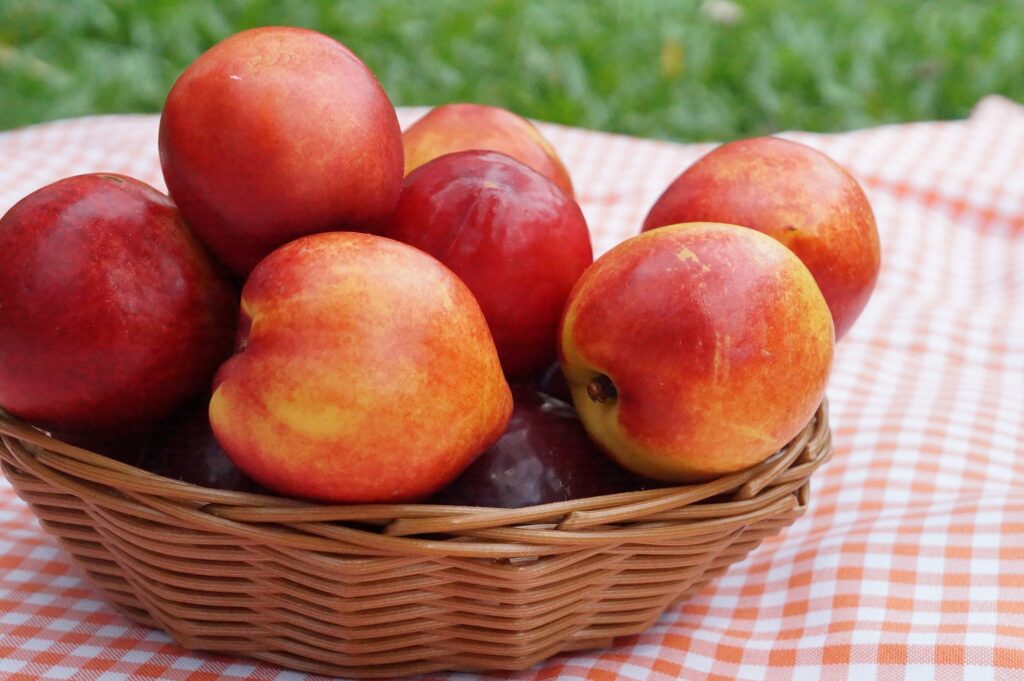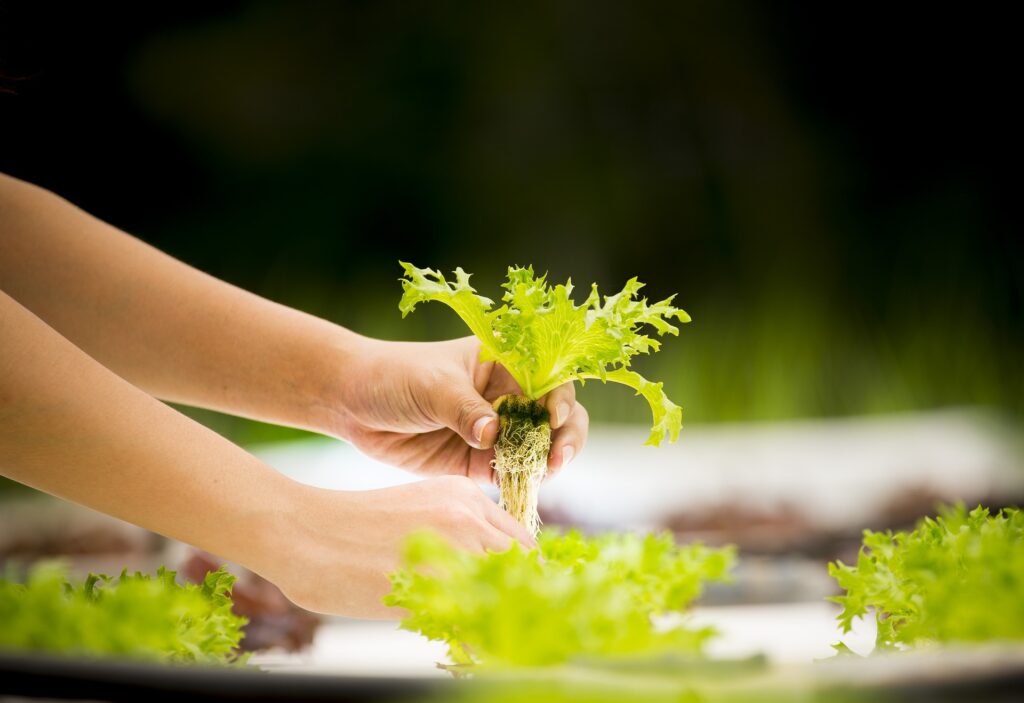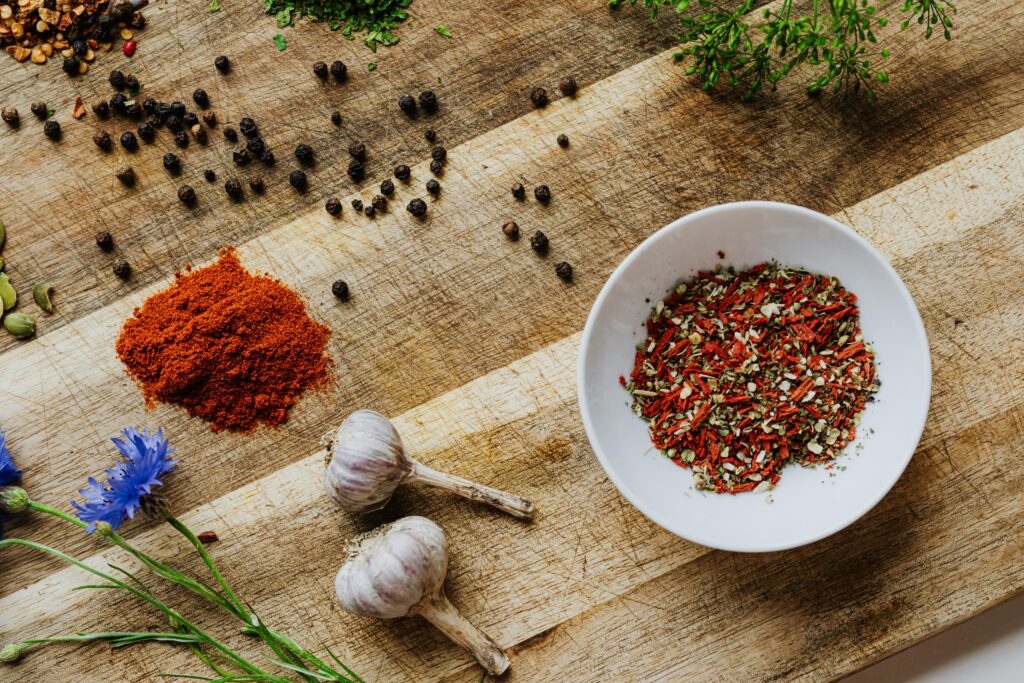Table of Contents
Introduction
The White Nectarine: a name that conjures images of summer days, vibrant orchards, and the anticipation of biting into a juicy, sweet fruit that’s both refreshing and nourishing. Unlike its peach counterpart, the white nectarine is distinguished by its smooth, glossy skin and a flavor that’s a perfect blend of sweetness with a hint of acidity. This delectable fruit has its roots deeply planted in the soils of history, with origins that trace back to China before making its way across the globe, capturing the hearts and taste buds of many.
The Nutritional Benefits of White Nectarines
Diving into the heart of health and vitality, nectarines emerge as nutritional champions. This fruit’s appeal transcends its succulent taste and aesthetic allure, anchoring deeply into its rich composition of vitamins, minerals, and antioxidants that collectively bolster well-being. Each white nectarine is a treasure trove of nutrients, promising not just pleasure to the palate but a plethora of health benefits.
At the core of its nutritional profile, nectarines are abundantly rich in Vitamin C, a potent antioxidant known for its role in strengthening the immune system, enhancing skin health, and even combating free radicals that can lead to chronic diseases. Furthermore, white nectarines offer a good supply of dietary fiber, essential for maintaining digestive health and promoting a feeling of fullness, aiding in weight management efforts.
Beyond these, nectarines are packed with vitamins A and E, potassium, and niacin, each contributing to its status as a superfruit. Vitamin A supports vision health and skin integrity, while Vitamin E plays a crucial role in protecting cell membranes from oxidative damage. Potassium, an essential mineral, is pivotal in maintaining electrolyte balance, regulating heart function, and supporting muscle and nerve function. Niacin, or Vitamin B3, aids in metabolism and energy production, ensuring that indulging in a white nectarine is as nourishing as it is enjoyable.
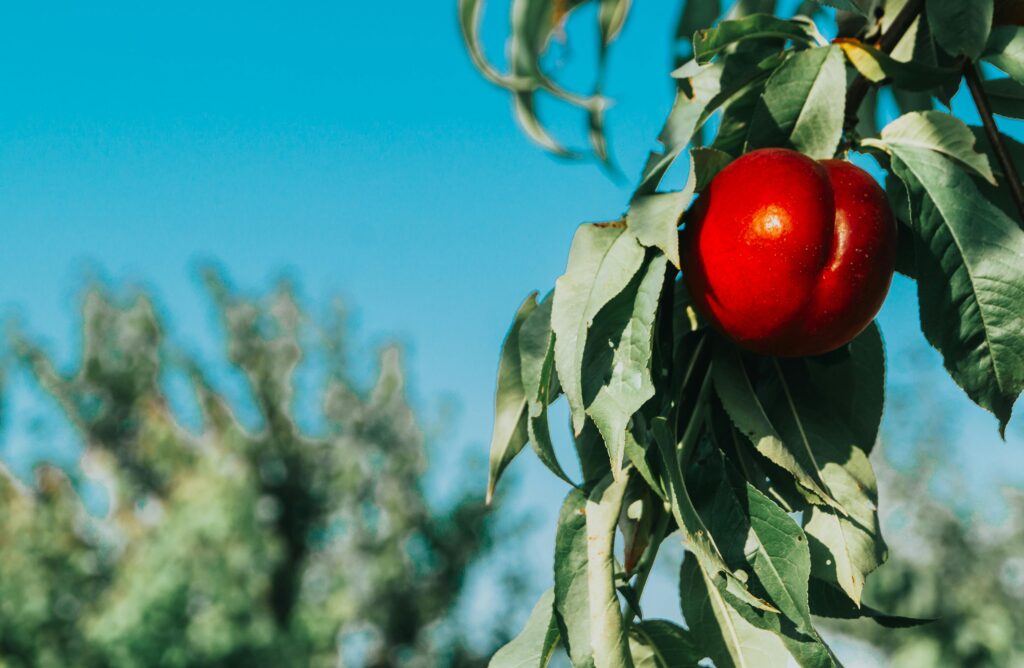
Cultivating the Nectarines: Tips and Techniques
Embarking on the journey of cultivating white nectarines transforms a simple gardening endeavor into a pursuit of horticultural excellence. These fruits, with their alluring sweetness and vibrant flesh, demand a blend of patience, care, and a keen understanding of their growth requirements. For the aspiring grower, the cultivation of white nectarines offers both a challenge and a reward, culminating in the joy of harvesting your own delectably sweet fruits.
The foundation of successful nectarine cultivation lies in selecting the right location. These stone fruits thrive in full sunlight, requiring at least six hours of direct sunlight daily to flourish. The choice of soil is equally pivotal; well-draining soil with a neutral pH balance creates an ideal environment for white nectarines to grow. Preparing the soil with organic matter can enhance its structure and fertility, promoting healthy root development.
Watering is a critical aspect of care, especially during the initial years of growth and throughout the flowering and fruiting seasons. However, it’s important to balance moisture levels, as overwatering can lead to root rot, while under-watering may stress the plant, affecting fruit quality and yield. Implementing a drip irrigation system can ensure consistent moisture levels, supporting optimal growth.
Pruning stands out as an essential technique in the cultivation of white nectarines, serving multiple purposes: it encourages air circulation, reduces the risk of diseases, and promotes the growth of stronger, more productive branches. Pruning should be done during the dormant season, with a focus on removing dead or overcrowded branches to enhance sunlight penetration and air flow within the canopy.
Do you know that you can also plant trees using the hydroponic method?
White Nectarine Varieties
The world of nectarines is as diverse as it is delicious, with each variety bringing its own unique set of flavors, textures, and aromas to the table. Whether you’re a gardener deciding which variety to plant or a consumer looking to explore the breadth of tastes available, understanding the different types of white nectarines can enhance your appreciation and enjoyment of this exquisite fruit.
One popular variety is the Arctic Queen, celebrated for its exceptionally sweet flavor and firm, juicy flesh. This variety stands out with its large size and beautiful, bright red skin kissed with shades of creamy white. The Arctic Queen ripens in the mid to late summer, providing a succulent treat during the warmest months.
The Snow Queen is another cherished variety, known for its early ripening and incredibly sweet, aromatic flesh. The Snow Queen’s skin is a delicate blush pink over a creamy white background, making it as visually appealing as it is flavorful. Its early harvest time, typically in late spring to early summer, makes it one of the first tastes of the season’s sweetness.
For those seeking a balance of sweet and tangy, the Honey Kist variety is a perfect choice. Honey Kist nectarines have a vibrant red-over-yellow skin and are renowned for their succulent texture and honeyed sweetness, with just a hint of acidity. This variety matures in late summer, extending the season of white nectarine enjoyment.
The Arctic Star stands out for its striking appearance and early ripening period. With its deep red skin contrasting against the stark white flesh, the Arctic Star offers a crisp texture and a balanced sweet flavor. It’s one of the first varieties to ripen, marking the beginning of the white nectarine season.
Lastly, the Zephyr variety, with its unique elongated shape and pale skin, offers a slightly firmer texture and a refreshing, mildly sweet flavor. It’s ideal for those who prefer a less intense sweetness, making it a versatile choice for culinary uses.
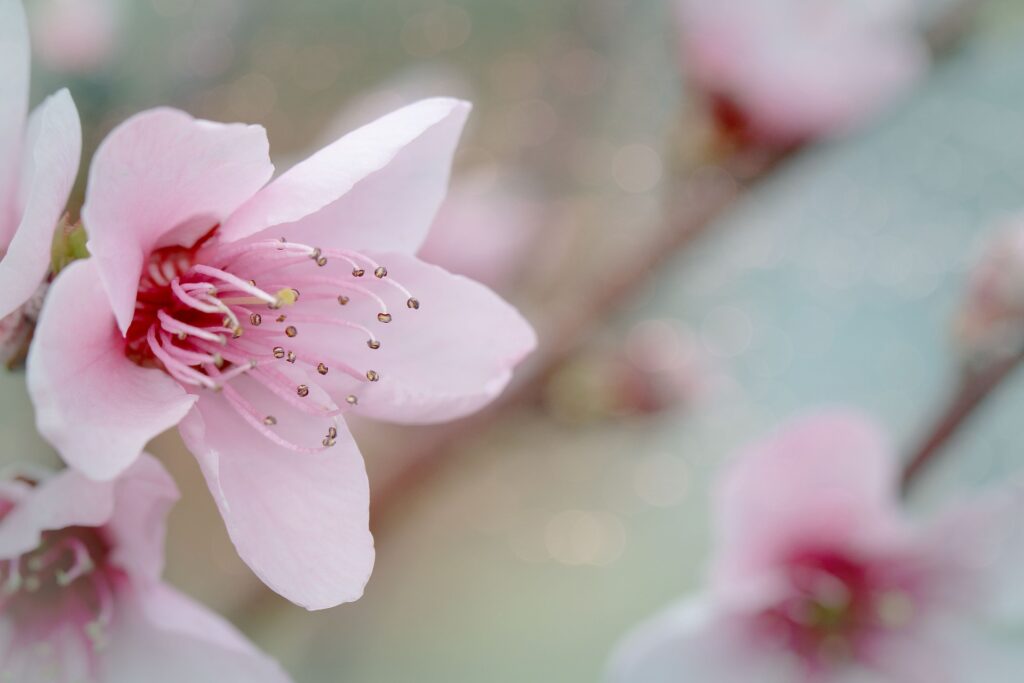
The Culinary World of White Nectarines
The allure of nectarines extends beyond their sweet, aromatic flavor and into the realm of culinary creativity, where their versatility shines in both sweet and savory dishes. From refreshing summer salads to decadent desserts, the white nectarine inspires chefs and home cooks alike to explore its potential in a variety of culinary creations.
One of the simplest yet most delightful ways to enjoy white nectarines is in a fresh fruit salad. Combining sliced nectarines with other summer fruits like berries, melon, and citrus, dressed with a hint of honey and a sprinkle of fresh mint, creates a refreshing dish that’s both light and satisfying.
White nectarines also make an excellent addition to savory dishes. Their sweetness can complement the flavors of grilled chicken or pork, adding a juicy, flavorful contrast. Try grilling slices of white nectarine alongside your protein of choice for a delicious, summery twist on your favorite barbecue dishes.
For those with a sweet tooth, incorporating nectarines into desserts opens up a world of possibilities. White nectarine cobblers, crumbles, and tarts are popular options that celebrate the fruit’s natural sweetness and juicy texture. Baking the nectarines intensifies their flavor, pairing beautifully with the buttery, crumbly textures of these desserts.
Moreover, nectarines can be transformed into exquisite jams and preserves, capturing the essence of summer in a jar. These homemade delights can elevate morning toast, serve as a delightful filling for pastries, or even accompany cheeses and charcuterie for an elegant appetizer.
Finally, for a refreshing summer beverage, pureed white nectarines can be used to make sorbets, smoothies, or cocktails. A nectarine bellini or sangria, for example, offers a sophisticated, fruity twist on classic drinks, perfect for savoring on a warm evening.
Preserving the Freshness: Storage and Handling Tips
To fully savor the delightful experience that nectarines offer, understanding the proper storage and handling techniques is essential. These practices not only extend the shelf life of the fruit but also ensure that their peak flavor and texture are preserved until you’re ready to enjoy them. Here are some tips to keep your white nectarines fresh and delicious.
Selecting for Freshness: When choosing white nectarines, look for fruits that are firm yet slightly give under gentle pressure, indicating they are ripe and ready to eat. The skin should be smooth, without any bruises or soft spots, which can quickly lead to spoilage.
Ripening at Home: If you’ve brought home white nectarines that are still a bit firm, you can allow them to ripen at room temperature on the kitchen counter. Placing them in a paper bag can accelerate the ripening process by trapping the ethylene gas they emit. Check daily for readiness.
Refrigeration to Extend Freshness: Once ripe, white nectarines can be stored in the refrigerator to slow down any further ripening and spoilage. Keep them in the crisper drawer away from vegetables to prevent them from absorbing any odors. Properly refrigerated, they can last for about a week.
Freezing for Long-Term Storage: For longer preservation, white nectarines can be frozen. First, wash, dry, and slice the fruit, removing the pit. To prevent browning, you can toss the slices in a bit of lemon juice. Spread the slices on a baking sheet to freeze individually, then transfer them to a freezer-safe bag or container. Frozen white nectarines are perfect for smoothies, baking, or cooking.
Handling to Preserve Quality: Handle white nectarines gently to avoid bruising. Bruises can quickly become spoilage spots. Wash the fruit just before you plan to eat it, as moisture can promote decay.
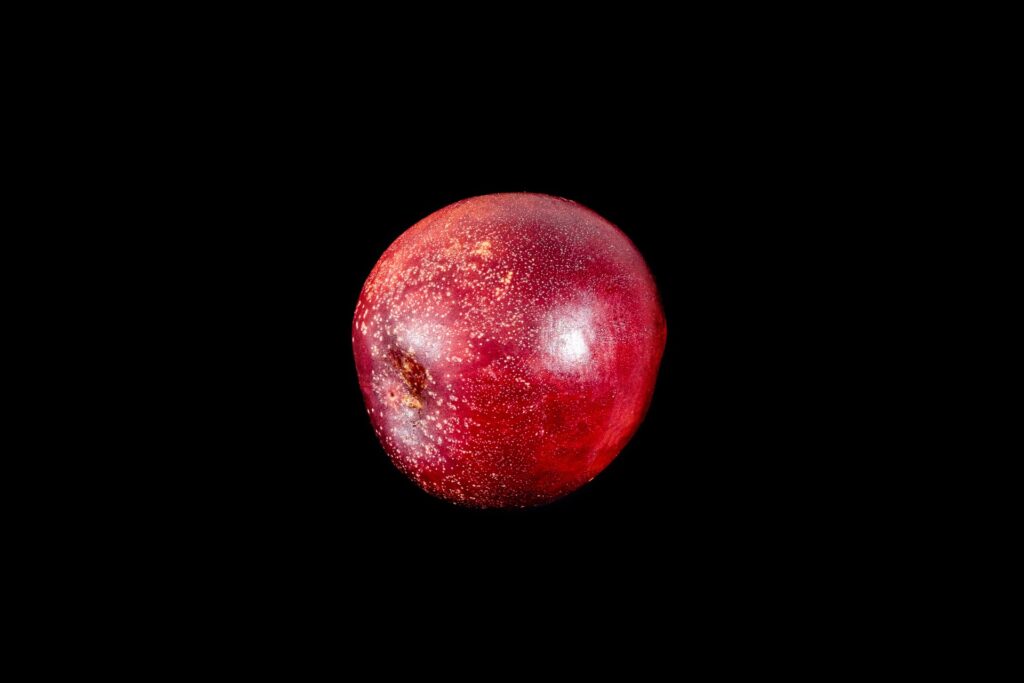
The Perfect White Nectarine: Selection and Ripeness Guide
Selecting the perfect nectarine is akin to discovering a hidden gem among stones. It’s an art that enhances the eating experience, ensuring each bite is as delightful as anticipated. Whether you’re picking from your backyard tree or choosing from a market’s bounty, understanding how to select and gauge the ripeness of white nectarines can greatly influence their taste and texture.
Visual Inspection: Begin with the color. Look for white nectarines with a vibrant, deep color that’s consistent across the fruit. While the specific color can vary among varieties, a rich hue often indicates good sun exposure and ripeness. The skin should be free from blemishes, bruises, or any signs of decay, which can affect the fruit’s quality and longevity.
Touch: The perfect white nectarine should feel firm but yield slightly to gentle pressure, especially around the stem end. This softness suggests the fruit is ripe and ready to eat. A hard nectarine may need a few more days to ripen, while an overly soft one might be past its prime, potentially mushy or overripe.
Fragrance: One of the most telling signs of a ripe white nectarine is its aroma. A fragrant fruit, with a sweet and floral scent, is often ripe and ready for consumption. If there’s little to no smell, the nectarine might still need time to ripen.
Stem and Skin: The area around the stem should be smooth and intact, without any green patches, which indicate immaturity. Additionally, the skin of the white nectarine should be taut and smooth, without any wrinkles, which can occur in overripe fruits.
After Selection – Ripening at Home: If you’ve selected white nectarines that are slightly firm, you can ripen them at home by placing them in a paper bag at room temperature. The bag traps ethylene gas produced by the fruit, speeding up the ripening process. Check them daily, and once they’ve softened slightly, they’re ready to be enjoyed or refrigerated to halt further ripening.
White Nectarines in Your Diet: Ideas and Inspiration
Incorporating white nectarines into your diet is a delightful way to enjoy their lush sweetness and nutritional benefits. Their versatility in culinary applications makes them an excellent ingredient in a wide array of dishes, from breakfasts to desserts, offering both health and flavor in every bite. Here are some ideas and inspiration for integrating white nectarines into your daily eating habits.
Breakfast: Start your day with a burst of freshness by adding sliced white nectarines to your morning yogurt or cereal. Their juicy sweetness pairs wonderfully with creamy yogurt, granola, and other fruits, providing a nutritious and energizing start. Alternatively, blend white nectarines into smoothies for a refreshing morning drink packed with vitamins.
Salads: Elevate your salads by incorporating white nectarine slices. Their sweetness complements the savory flavors of greens, nuts, and cheese, creating a balanced and vibrant dish. A white nectarine and arugula salad with goat cheese, almonds, and a balsamic glaze is a simple yet sophisticated option that showcases the fruit’s versatility.
Main Dishes: White nectarines can also be a star ingredient in main dishes. Try incorporating them into salsas or chutneys that can serve as a complement to grilled or roasted meats, such as chicken, pork, or fish. The fruit’s sweetness contrasts beautifully with the savory flavors, adding depth and complexity to the meal.
Desserts: For a sweet ending to your day, white nectarines are a natural choice. Their natural sweetness reduces the need for added sugars, making them a healthier option for desserts. Bake them into pies, tarts, or cobblers, or serve them fresh with a dollop of whipped cream or ice cream for a simple yet satisfying treat.
Snacks: For a quick and healthy snack, enjoy white nectarines on their own or slice them up with a sprinkle of cinnamon or honey. Their refreshing taste and juicy texture make them a perfect snack to satisfy sweet cravings without resorting to processed foods.
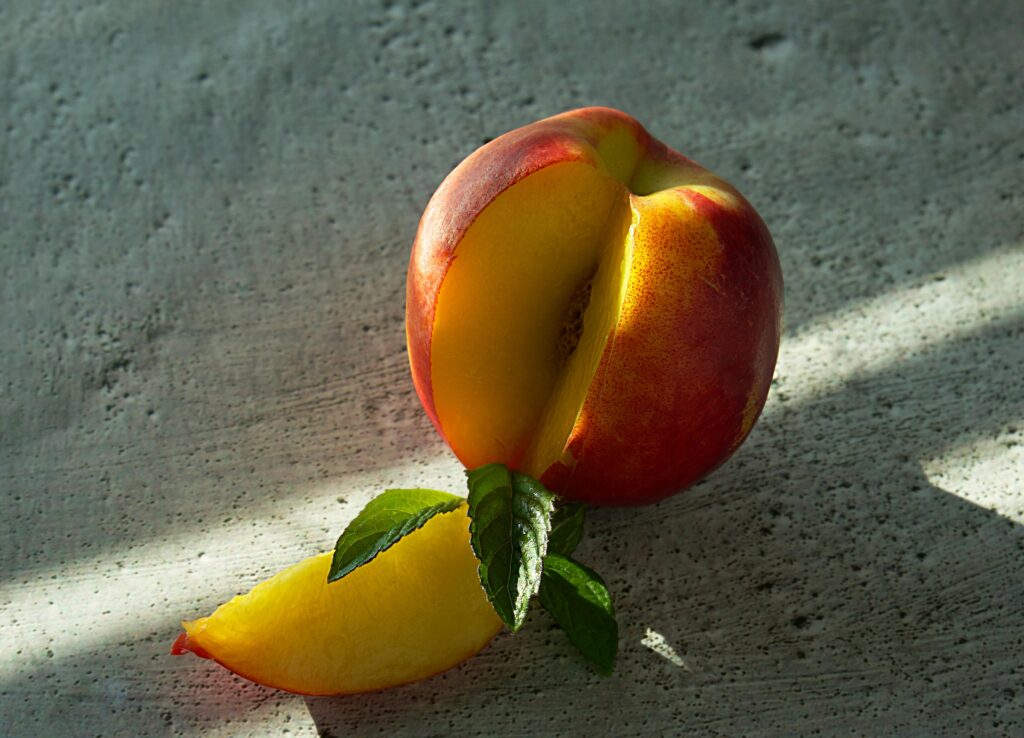
FAQ
How Many Calories in a Nectarine?
A medium-sized white nectarine typically contains about 60 to 70 calories, making it a low-calorie option that’s perfect for anyone looking to maintain a healthy diet without sacrificing sweetness or flavor. This nutritional profile, combined with the fruit’s high water content and fiber, makes white nectarines an ideal snack for weight management and hydration.
How to Tell if a Nectarine is Ripe?
A ripe nectarine can be identified by its slight give when gently pressed, particularly around the stem area. It should feel firm but not hard. Additionally, ripe white nectarines emit a sweet, fragrant aroma. The skin should be vibrant and smooth, without any green tinges, which indicate under-ripeness.
How to Cut and Eat a Nectarine?
To cut a white nectarine, start by slicing along the fruit’s natural seam, twisting the halves to separate them. Remove the pit, and then slice or chop the fruit as desired. White nectarines can be enjoyed with the skin on, offering a crisp texture and added fiber. They’re perfect eaten raw, added to dishes, or cooked in various recipes.
When is Nectarine Season?
White nectarine season typically runs from late spring through the end of summer, varying slightly depending on the growing region. This timeframe allows for the enjoyment of fresh white nectarines at their peak of ripeness, offering the best in terms of flavor and nutritional value. Availability may extend through early fall for some late-ripening varieties.
Conclusion
Through our exploration of white nectarine, we’ve delved into their nutritional value, cultivation tips, diverse varieties, culinary applications, storage guidelines, selection advice, and ways to integrate them into your diet. This journey has highlighted not only the deliciousness of white nectarines but also their role in promoting a healthy, vibrant lifestyle. Embrace the joy and satisfaction that comes from engaging with this exquisite fruit, a true symbol of summer’s bounty.

